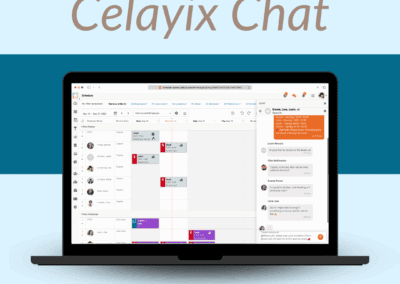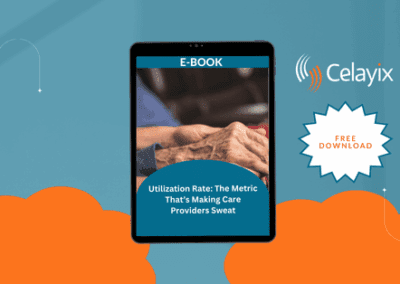Trends such as mobile workforces, hybrid models, and the ongoing pursuit of work‑life balance reshaping the way we work. That means that managers need to be armed with data and insights to drive positive change. Lucky for you, we’ve compiled crucial data, statistics and insights to highlight the workforce management trends that are shaping workplaces across the USA and Canada.
Employee Retention: Keeping Your Talent on Board
Retention is the cornerstone of a stable workforce. The statistics below reveal why organizations must pay attention to employee turnover to be successful. When employees feel valued and supported, they are more likely to stay with your company. Our data underscores the importance of onboarding, recognition programs, and flexible work arrangements in reducing turnover.

- In 2022, more than 50 million U.S. workers quit their jobs. The “Great Resignation” trend continued into 2023 with persistent retention challenges.
- In 2023, 67% of employed job seekers planned to quit, and 34% of them would leave without another job lined up.
- Only 22% of respondents who left their jobs in 2022 reported regretting their decision.
- Approximately 55% of workers felt underpaid compared to peers in 2023, contributing to higher turnover.
- Effective onboarding (especially extended over the first year) can increase new hire retention by up to 25%.
- Companies with recognition‑rich cultures report up to 31% lower voluntary turnover rates.
- Flexible work arrangements can reduce turnover by as much as 50% in some industries.
- Mental health support programs are shown to offer a 4‑to‑1 return in productivity, thereby helping improve retention.
Sources; People Managing People
Employee Engagement: Fuelling Productivity and Profitability
Engaged employees are the engine of any successful organization. Research consistently shows that high levels of engagement lead to increased productivity and higher profit margins. Below are some statistics and workforce management trends that illustrate the direct benefits of fostering an engaged workforce.

- Only about one‑third of employees globally were engaged at work in 2023—with an engaged to actively disengaged ratio of 2.1:1.
- Highly engaged teams can boost productivity by up to 21% and drive profit margins to be three times higher than those of disengaged teams.
- In 2023, only 23% of employees worldwide felt engaged at work—a slight improvement over 20% during the pandemic.
- Organizations that prioritize employee engagement report three times higher profit margins compared to companies with low engagement levels.
- Regular, transparent communication and feedback can help improve retention and engagement by nearly 19%.
- Engaged employees are associated with 14.9% lower turnover rates, reinforcing the importance of robust engagement practices.
Sources; SHRM, ScreenCloud
Workforce Flexibility & Scheduling: The Modern Manager’s Toolbox
As the demand for flexible work grows, providing employees with control over their schedules is no longer a per. It’s a necessity. Embracing flexible scheduling not only enhances work‑life balance but also drives higher employee satisfaction and operational efficiency. The following workforce management trends shed light on the transformative impact of flexibility in the workplace.

- In 2023, 93% of employees expressed a desire for schedule flexibility, while 81% of desk workers want location flexibility.
- Flexibility was the top reason for staying in a job in 2023, with 28% of respondents citing it as their main motivator.
- Approximately 72% of professionals believe that flexible work options enhance their loyalty to their employer.
- In France during 2023, 33.5% of workers engaged in telecommuting, and some were even willing to sacrifice 5% of their salary for added flexibility.
- U.S. surveys indicate that, on average, workers value hybrid work at roughly 8% of their overall compensation.
- Automated scheduling systems have reduced manual scheduling errors by up to 30% in large organizations.
- Companies using advanced workforce management tools have reported up to a 25% reduction in labor costs in their first year of implementation.
- Predictive scheduling analytics have been shown to reduce absenteeism by up to 50% in certain organizations.
- Some firms report an 88% increase in shift coverage efficiency and a 16% decrease in worker turnover with automated scheduling solutions.
- Among hourly workers, nearly 40% said they’d consider leaving if their work schedule lacked consistency.
- Intuitive, real‑time scheduling platforms allow workers to check, bid for, and trade shifts, leading to higher overall satisfaction.
Sources; Achievers, Le Monde, EauClaireChamber
Remote & Hybrid Work Trends: Adapting to a New Normal
The landscape of work has shifted dramatically, with remote teams and hybrid models becoming mainstream. These trends not only save time and reduce costs but also improve employee quality of life. The statistics and workforce management trends below capture the evolution of remote work and its lasting impact.
- In 2021, 45% of U.S. full‑time employees worked remotely; by 2023, the hybrid model had grown so that 52% of remote‑capable employees used a mix of onsite and remote work.
- About 91% of U.S. workers capable of remote work hoped to maintain at least a part‑time remote arrangement post‑pandemic.
- U.S. federal agencies saved more than $180 million in fiscal 2020 through remote work arrangements.
- In London, the percentage of job vacancies listed as hybrid or remote increased from 4% in February 2020 to 18% by February 2023.
- A March 2023 survey in the UK found that respondents reported a nearly even split—with about 35% required onsite for two days, 33% for three days, and 33% working fully remote.
- Hybrid work arrangements can save employees an average of 56 minutes per day on commuting and add approximately 24 extra minutes for rest.
Employee Health & Well‑Being: The Heart of Workforce Management

Employee wellbeing and health is paramount to long‑term success. Ensuring that workers have the flexibility to manage both physical and mental well‑being is a win for both employees and employers. The following statistics illustrate how prioritising health, and creating a healthy work environment can lead to lower sick leave, reduced burnout, and a more satisfied workforce.
- In the first 10 months of 2023, 30% of employees took sick leave—a 42% increase over 2019 levels.
- The average duration of sick leave in 2023 increased by 15%, reaching roughly 15.5 hours per year.
- According to Gen Z surveys, 81% of young workers believe employers should actively support physical well‑being, and 83% feel the same about psychological well‑being.
- Approximately 62% of Gen Z employees are willing to accept a lower salary for improved work‑life balance that includes more health and wellness benefits.
- Work‑life balance programs (e.g., flextime, remote work options) have been directly linked to increased job satisfaction and lower stress levels.
Sources; NY Post,
Management & Leadership Influence: Leading by Example
Strong leadership is essential for fostering a positive workplace culture and employee experience. The right managerial practices not only boost engagement but also significantly reduce turnover. The workforce management trends below emphasize how strategic leadership and regular feedback are critical components of workforce management.
- Over half (52%) of employees who quit in 2023 believed that better managerial support might have persuaded them to stay.
- Regular one‑on‑one meetings and timely feedback from managers have been shown to reduce turnover intention by nearly 19%.
- Approximately 80% of managers feel they would perform better with clearer guidance on prioritizing work tasks.
Sources; People Managing People, SHRM
Scheduling Complexity & Automation: Streamlining Operations

Modern workforce management software, like Celayix, leverages automation to tackle employee scheduling complexity. These tools not only reduce errors and save time but also help maintain compliance with labor laws and improve overall employee satisfaction. Here’s why you might want to consider investing in a workforce management solution.
- Advanced workforce scheduling technologies have reduced overtime errors and labor inefficiencies by up to 10% annually.
- Automation‑powered scheduling solutions enable a 30% increase in operational scheduling effectiveness.
- Customizable scheduling systems that adapt to specific labor laws and operational needs can reduce scheduling grievances by reducing reworks and errors.
- Tailor‑fit scheduling software can provide real‑time insights into demand fluctuations, allowing managers to optimize shift allocations continuously.
The Great Resignation & Labor Market Shifts: Navigating Change
The so‑called “Great Resignation” has forced companies to rethink their workforce strategies. From Millennials to Gen Z, many workers are seeking better work‑life balance, prompting a shift in the labor market that talent management must understand and adapt to. So, what workforce management trends can have we seen related to that?
- Microsoft’s Work Trend Index found that more than 40% of the global workforce considered quitting in 2021—a mindset that still influences retention strategies in 2023.
- Millennials and Gen Z have been driving the “Great Resignation,” with over half of Gen Z workers planning to seek new jobs in the coming year.
- By mid‑2023, quit rates in many sectors had returned to pre‑pandemic levels after a surge during the height of the Great Resignation.
- Job mismatches and workplace burnout have been major factors behind mass resignations over the past few years.
- Older workers (aged 55–74) contributed about 35% to the overall employment shortfall in the U.S. during the Great Resignation period.
Sources; Microsoft, Harvard Business Review
Additional Insights on Remote Work & Flexible Arrangements
Finally, remote work continues to reshape the economic landscape. As organizations embrace hybrid models and flexible work arrangements, both employers and employees are experiencing significant benefits ranging from cost reductions to improved job satisfaction.
- Before the pandemic, remote work accounted for only 5% of working days; by 2023, that figure has risen to roughly one‑third, dramatically reducing corporate real‑estate expenditures.
- Nearly all public sector organizations in OECD countries have implemented some form of flexible work arrangement (e.g., part‑time work, flextime) as of 2023.
- In Europe, countries like Finland report that up to 25.1% of workers regularly work from home, while in others (e.g., Bulgaria) the rate remains as low as 1.2%; similar disparities continue into 2023.
- Studies consistently show that flexible work arrangements—such as flextime and remote work—improve perceptions of job quality and overall employee satisfaction.
Sources; OECD, The International Journal of Human Resource Management
The workforce management landscape is evolving rapidly. From employee retention and engagement to the benefits of flexible scheduling and remote work, these trends paint a clear picture of the challenges and opportunities facing today’s managers. At Celayix, we’re proud to offer a robust workforce management software solution that empowers organizations to navigate these changes efficiently. By leveraging our cutting‑edge employee scheduling, time & attendance tools, you can not only streamline your operations but also create a workplace that attracts and retains top talent.

This blog is intended to serve as an evergreen resource for managers looking to stay ahead of industry trends. We encourage you to bookmark this post, share it with your network, and refer back to it whenever you need fresh data to drive your HR strategies. With Celayix, you have a partner in building a future‑ready workforce.
For more insights on workforce management trends, visit the Celayix blog to explore our comprehensive software solutions designed to simplify employee scheduling and enhance overall productivity. You can also speak to a Solutions Advisor if you’re ready to level up your workforce management with Celayix by booking a custom, live demo here.




